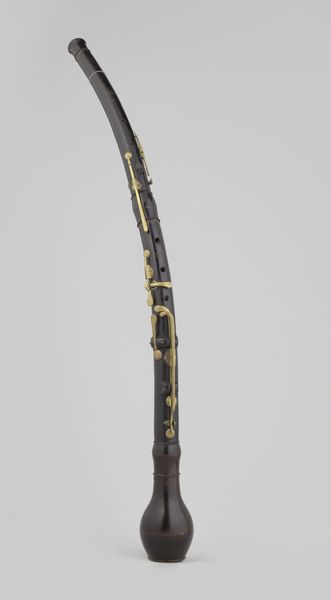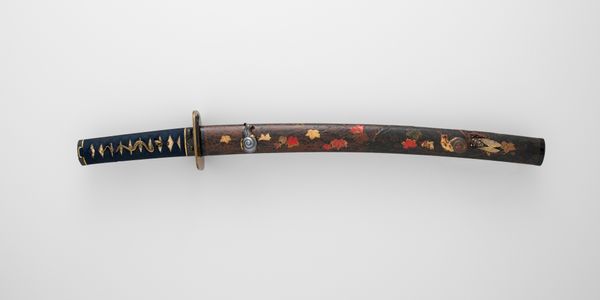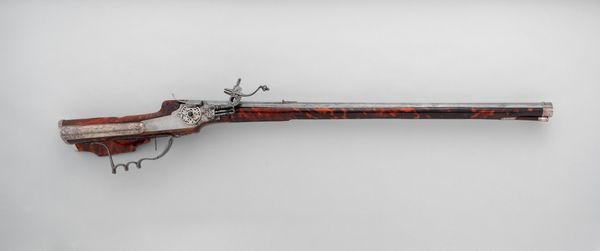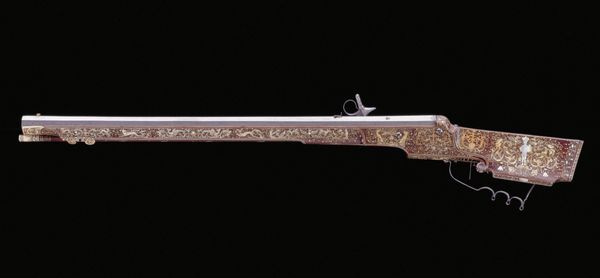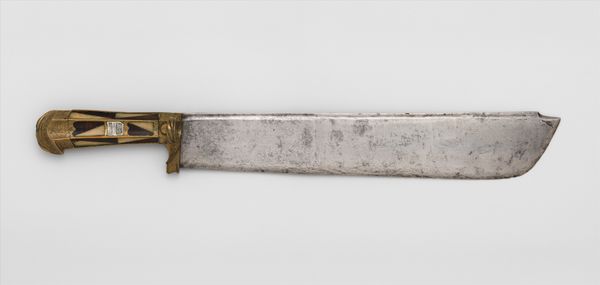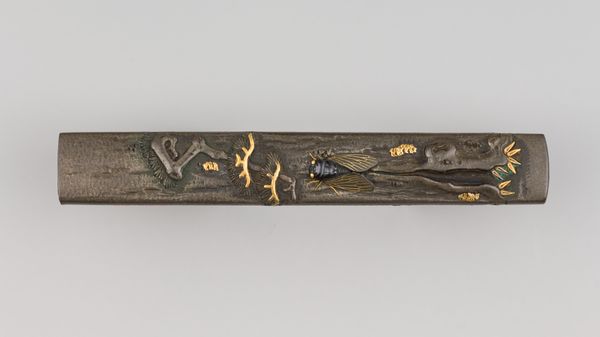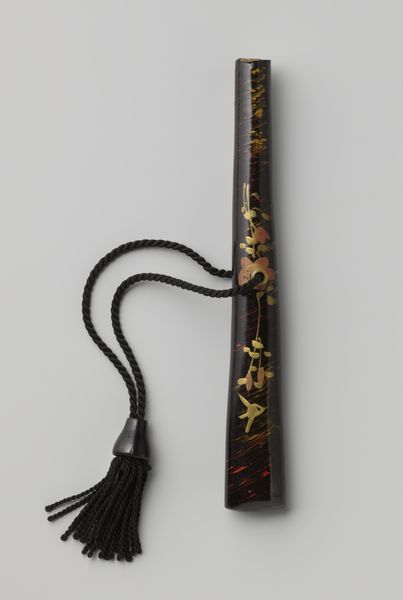
グリ彫金具脇指拵 Blade and Mounting for a Short Sword (<i>Wakizashi</i>) 1601 - 1900
0:00
0:00
metal
#
metal
#
asian-art
#
japan
#
historical fashion
#
armor
#
decorative-art
#
sword
Dimensions: L. 24 3/4 in. (62.9 cm); L. of blade 17 1/4 in. (43.9 cm); L. of cutting edge 12 1/2(31.8 cm); D. of curvature 3/16 in. (0.5 cm); L. of kozuka 8 in. (20.3 cm); L. of kogai 8 3/8 in. (21.3 cm)
Copyright: Public Domain
Curator: Here we have a wakizashi, a short sword from Japan. The blade and mounting date between 1601 and 1900, and the signature indicates it comes from the Owari-Seki school. The piece makes use of metal crafting. Editor: Immediately, the sheath's speckled design jumps out. It's almost like a star-filled night sky contained in this object of lethal beauty. Curator: Exactly! The combination of deadly purpose and ornate decoration is core to understanding these objects. We must consider the samurai culture that forged such exquisite weaponry and explore the social stratification. To own and bear arms was power, an overt display of status and dominance in the feudal era. The aesthetic program reflects that hierarchy. Editor: What about the specific imagery though? Are there underlying patterns beyond the scattered speckles, symbolic programs? Curator: Probably. While superficially pleasing, each element was charged. The handle, wrapped tightly, afforded grip but spoke to discipline. A lost art to western viewers as its beauty supersedes a dark history. The grip is secure and precise. Think, too, of the socio-political narratives around this type of armor that the piece reflects and perpetuates even today. Editor: Indeed. And what are those colors communicating to those times when social semiotics had the weight of law behind it? The darker handle and the scabbard's white against the dark create this contrasting tension, this almost visual balance between restraint and display, darkness and light. Curator: Perhaps, we cannot deny the symbolism as an abstract piece. The tension created also parallels themes present in art of the era. It speaks of complex value structures. Editor: In this light, understanding these Japanese works involves considering everything. Class, symbolism, and aesthetics—the samurai ethos is clearly crystallized in metal. Curator: Absolutely. I've found viewing arms through this critical, intersectional lens unlocks fascinating stories of cultural transmission and social practice. Editor: And I'll definitely carry a more nuanced view as I venture into further areas of our cultural archetypes.
Comments
No comments
Be the first to comment and join the conversation on the ultimate creative platform.


